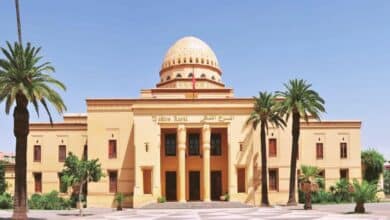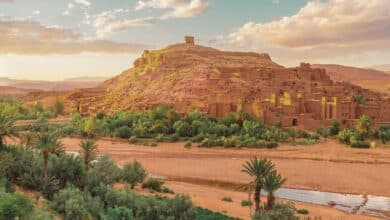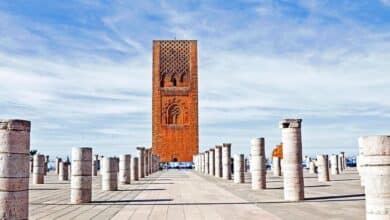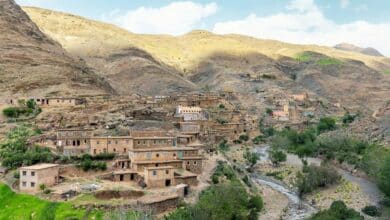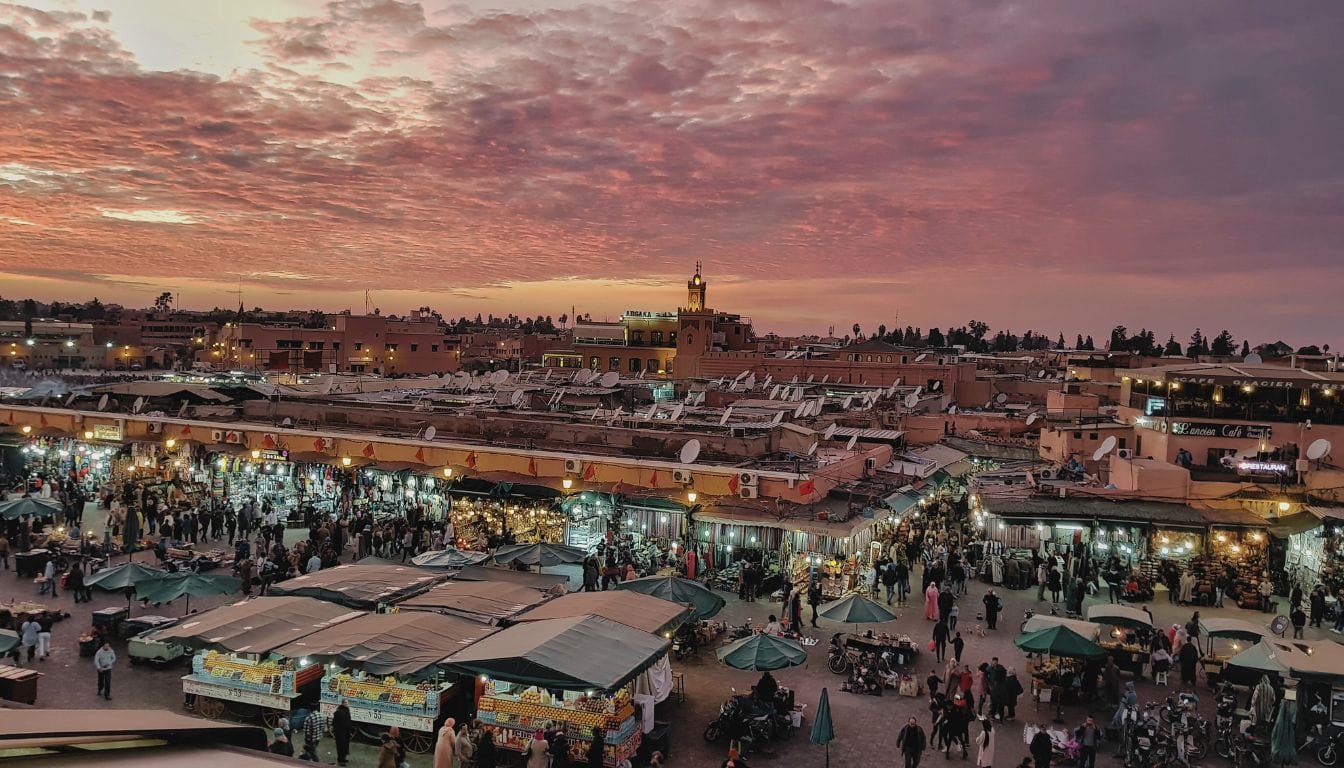
Jemaa el-Fna Square Marrakech: Things to See & Do
Did you know that more than a million people come to see Jemaa el-Fna Square every year? It is the main square of Marrakech . It is the center of the city, linking its history to its present. It is located at 31°37′33″ north and 7°59′22″ west.
UNESCO declared it a cultural heritage site in 2001 and a World Heritage Site in 1985. Morocco places Jemaa el Fna charms with its daily shows. We see Moroccan traditions there, from music to the arts. More than 10,000 meals are served every day. Local flavors make the taste experience unforgettable.
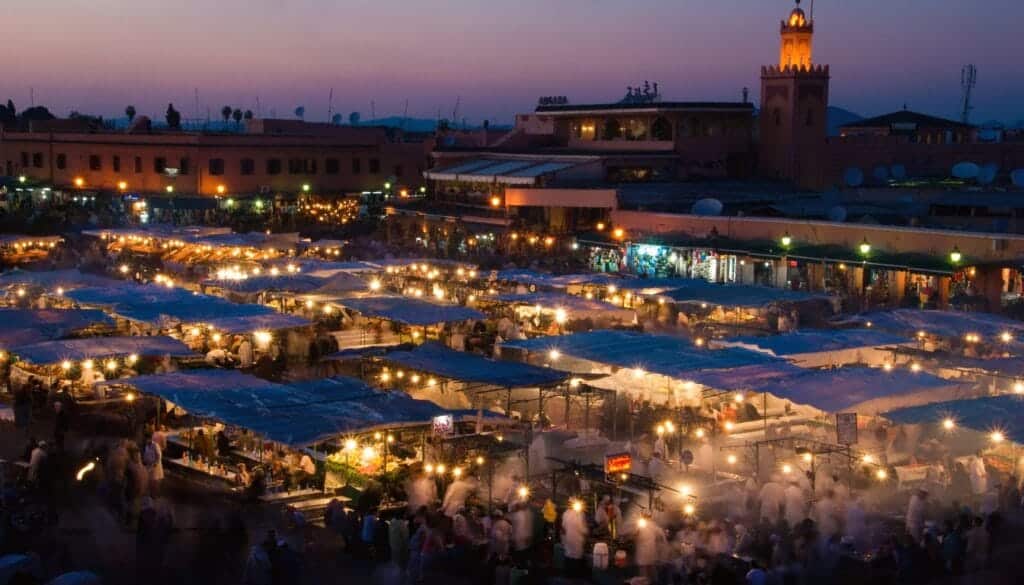
It is also a lively market. You can find everything from traditional medicine to henna tattoos . This place is a concentrate of Moroccan traditions. Every corner of Place Djema has a story to tell.
History and Cultural Significance
Jemaa el-Fna Square is a remarkable place, known for centuries. It was recognized by UNESCO in 1985 and by humanity in 2008. The location, 31° 37′ 33″ north, 7° 59′ 21″ west, is steeped in rich history and varied cultures.
Every year, more than a million people visit this site. They come to discover its past and its practices that are still very much alive. Jemaa el-Fna is famous for its festivals, day and night, with shows that delight visitors.
Origins and Etymology
Initially, this place was a weekly market as early as the 11th century, under the Almoravids . Its name, Jemaa el-Fna, is full of mystery. “Jemaa” means “assembly” and “el-Fna” can mean “death” or an open place.
According to one story, its name refers to a mosque wiped out due to the plague. This mosque was a project of the Saadian Sultan Ahmed al-Mansour .
Evolution Over the Centuries
This place has seen Marrakech change under different dynasties, since its founding in the 11th century. The Almohads and the Saadians left their mark. In 1864, an explosion transformed this place.
After French influence, the Medina of Marrakech and its traditional Moroccan market were protected. In 1922, the square was officially designated as a cultural heritage site to be preserved. Even today, it remains an important place in the heart of the city, carrying traditions. Writers like Elias Canetti and Juan Goytisolo have mentioned it.
Activities at Jemaa el-Fna Square
The Jemaa el-Fna Square in Marrakech is very lively. It attracts more than a million visitors per year. These visitors come for its varied and unique activities, which show the culture of Morocco.
Daytime Entertainment
In the morning, the square is full of life. There are water sellers and stands with orange juice for 4 dirhams. You can also buy local remedies. But what attracts the most is the music of the snake charmers and the henna tattoos done by local artists. All this makes the place very lively in the morning.
Night life
In the evening, the square becomes a large theater. Berber music and Gnaoua dances fill the streets. You can listen to storytellers tell traditional stories in Arabic or Tamazight. The food stalls serve over 10,000 meals a day, featuring delicious local dishes.
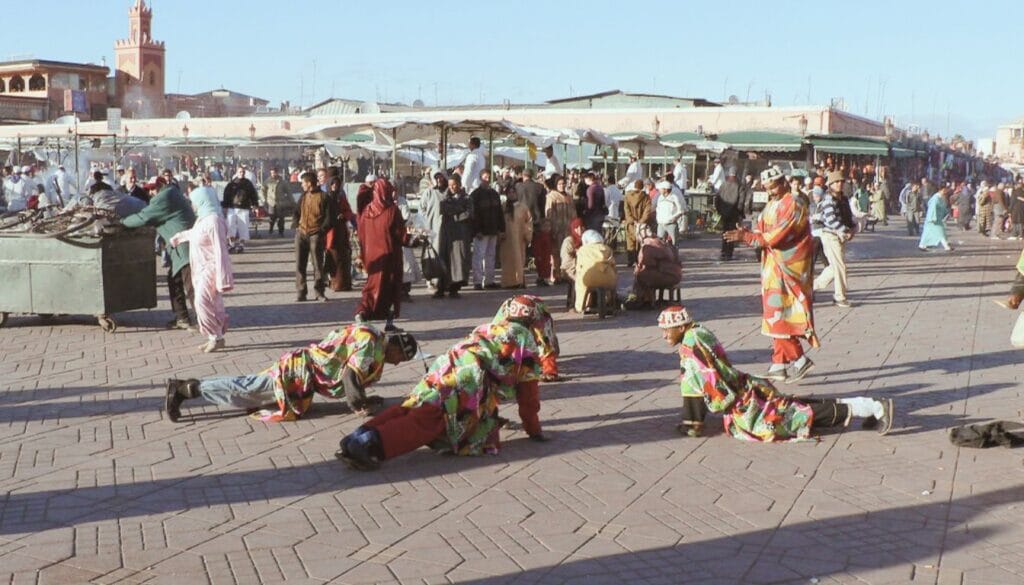
Cultural Significance
Jemaa el-Fna is more than an attraction, it is a place of cultural preservation. It is on the UNESCO World Heritage List and is considered an intangible cultural asset of humanity. Local artisans and sellers show their talent here. This place highlights the cultural diversity of Morocco and honors the Berber oral tradition.
Conclusion
In conclusion, Jemaa el-Fna Square is a major symbol of Moroccan identity. It is recognized worldwide thanks to its inclusion in the UNESCO intangible heritage . We find the essence of Marrakech there.
This vibrant place is marked by the Koutoubia mosque. You can visit the Marrakech souk to discover local life. It is a must-see place for those curious about Moroccan culture.
For centuries, Place Jemaa el-Fna has remained in the heart of Marrakech . There are fresh orange juice stands and traditional dishes. It is also the playground of snake charmers and storytellers. In the evening, the atmosphere becomes magical, with markets and live music.
A place of memory and creativity, Jemaa el-Fna attracts thousands of visitors. It is a symbol of hospitality and the diversity of Moroccan culture. Its preservation is key to preserving this living cultural treasure of Marrakech.

